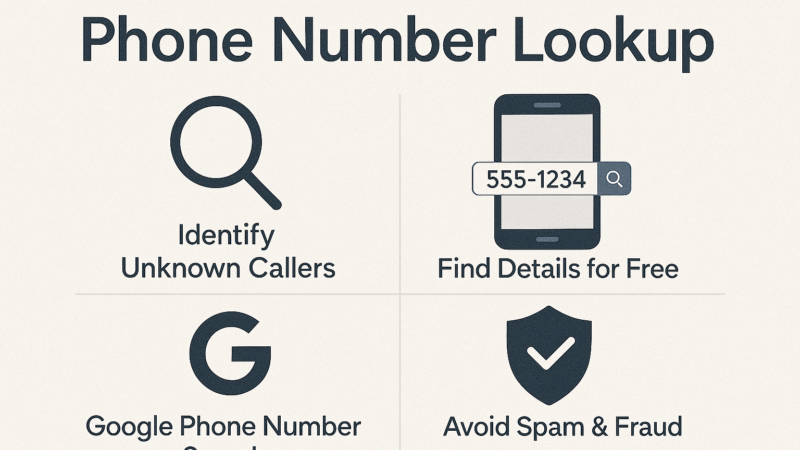DM108Basic – Everything You Need to Know (2025 Guide)

What is DM108Basic?
DM108Basic is an innovative digital solution designed to optimize performance, security, and efficiency. It is gaining popularity due to its advanced features and ease of use. Whether you’re a developer, business owner, or tech enthusiast, understanding DM108Basic can help improve your workflow.
Why is DM108Basic Gaining Attention?
This tool is becoming a top choice for businesses and programmers. It provides structured programming, efficient debugging tools, and excellent memory management. Unlike traditional digital solutions, DM108Basic offers flexibility and scalability.
Key Benefits and Features
- Enhanced security solutions to protect sensitive data.
- Performance optimization for faster processing.
- Structured programming to simplify coding.
- Debugging tools to help fix errors efficiently.
- Easy integration with existing systems.
How Does DM108Basic Compare to Other Solutions?
DM108Basic stands out because of its cost-effectiveness and adaptability. Compared to other digital solutions, it requires fewer resources while delivering superior performance.
Understanding the Core Features of DM108Basic
1. Performance Optimization
DM108Basic is designed for speed and efficiency. It processes commands faster than traditional systems, reducing lag and improving overall functionality. Whether used for software development or data processing, it ensures smooth performance.
2. Structured Programming
One of the standout features of DM108Basic is its structured programming model. This makes coding easier, more organized, and reduces errors. Developers can work more efficiently, leading to cleaner and more maintainable code.
3. Advanced Debugging Tools
Finding and fixing errors is easier with DM108Basic. Its debugging tools help detect issues quickly, allowing developers to resolve them before they cause bigger problems. This feature improves productivity and reduces downtime.
4. Security and Data Protection
Security is a top priority. DM108Basic includes built-in security protocols to protect sensitive data. This makes it ideal for businesses handling confidential information or developers working on secure applications.
5. Easy Integration with Existing Systems
Another advantage of DM108Basic is its compatibility. It can be integrated into existing digital systems without requiring a complete overhaul. This flexibility makes it a great choice for businesses looking to upgrade their tech without high costs.

Applications of DM108Basic in Various Industries
1. Software Development
DM108Basic is widely used in software development due to its efficiency and ease of use. Developers rely on its structured programming and debugging tools to create reliable applications with fewer errors.
2. Business and Enterprise Solutions
Many businesses use DM108Basic to manage their operations. Its performance optimization and security features make it an excellent choice for handling large-scale data and automating processes.
3. Education and Learning
Educational institutions use DM108Basic as a teaching tool for programming. Its simplicity makes it ideal for beginners, while its advanced features help experienced coders develop their skills.
4. Data Analysis and Management
Organizations dealing with large datasets benefit from DM108Basic’s processing power. It helps in organizing, analyzing, and interpreting data quickly, making it valuable for research and decision-making.
5. E-commerce and Online Businesses
E-commerce platforms use DM108Basic to streamline operations. It helps manage inventory, track sales, and optimize the customer experience with faster data processing.
How DM108Basic Compares to Other Programming Languages
1. Simplicity and Ease of Use
DM108Basic stands out for its user-friendly syntax. Unlike complex programming languages, it offers a straightforward structure that beginners can easily grasp.
2. Performance and Speed
Compared to other languages, DM108Basic provides fast execution times. It is optimized for efficient data handling, making it a reliable choice for performance-driven applications.
3. Versatility in Applications
While languages like Python and Java are popular, DM108Basic offers specialized features tailored for business applications, data management, and automation tasks.
4. Security Features
Security is a major concern in programming. DM108Basic includes built-in security protocols that help protect data and prevent vulnerabilities.
5. Community Support and Resources
Although DM108Basic has a smaller community than mainstream languages, it still provides ample resources, tutorials, and forums for developers.
Best Use Cases for DM108Basic
1. Business Applications
DM108Basic is widely used in business environments. Companies rely on it for inventory management, data processing, and financial applications.
2. Educational Purposes
Since DM108Basic is easy to learn, schools and training institutes often use it to introduce students to programming fundamentals.
3. Automation and Scripting
This language excels in automating repetitive tasks. It simplifies processes such as data entry, report generation, and workflow automation.
4. Embedded Systems
DM108Basic is lightweight, making it suitable for embedded systems in IoT devices and small-scale hardware applications.
5. Custom Software Development
Businesses that require customized solutions can use DM108Basic to develop tailored applications for their specific needs.
Comparison: DM108Basic vs. Other Programming Languages
Feature Comparison: DM108Basic vs. Other Programming Languages
| Feature | DM108Basic | Python | Java | C++ | JavaScript |
|---|---|---|---|---|---|
| Ease of Use | ✅ Simple syntax, great for beginners | ✅ Easy to learn, widely used | ❌ More complex, requires deeper understanding | ❌ Complex but powerful | ✅ Beginner-friendly, widely used for web development |
| Performance | ⬆️ Efficient for lightweight applications | ⬇️ Slower for high-performance tasks | ⬆️ High-performance with JVM optimization | ⬆️ Excellent for performance-intensive applications | ⬇️ Slower than compiled languages |
| Flexibility | ❌ Limited outside its niche | ✅ Versatile for multiple fields | ✅ Strong in enterprise applications | ✅ Good for system-level programming | ✅ Great for web and front-end development |
| Compatibility | ✅ Works well with legacy systems | ✅ Extensive libraries for various applications | ✅ Cross-platform compatibility | ✅ Works across multiple platforms | ✅ Supported in all browsers |
| Industry Adoption | ⬇️ Niche applications | ⬆️ Popular in AI, web, and automation | ⬆️ Enterprise and mobile development | ⬆️ Gaming and high-performance applications | ⬆️ Web development and front-end scripting |
1. Ease of Use
DM108Basic is beginner-friendly, with a simple syntax compared to complex languages like Python or Java. It’s ideal for those new to coding.
2. Performance
While DM108Basic is efficient for lightweight applications, high-performance languages like C++ or Rust are better suited for complex computations.
3. Flexibility
Unlike JavaScript or Python, which support multiple paradigms, DM108Basic is more structured, making it less versatile but easier to learn.
4. Compatibility
DM108Basic integrates well with legacy systems but lacks the extensive libraries available in Python, which is widely used for AI and data science.
5. Industry Adoption
Languages like Python, Java, and C++ dominate various industries, while DM108Basic is primarily used in niche applications.

How to Get Started with DM108Basic
Getting started with DM108Basic is simple. Follow these steps to begin coding efficiently:
1. Install the Required Software
Before you start coding, ensure you have the right tools:
- DM108Basic Compiler: Download it from the official website.
- Text Editor or IDE: Notepad++, VS Code, or any basic text editor works.
2. Write Your First DM108Basic Program
Here’s a simple Hello, World! program in DM108Basic:
PRINT "Hello, World!"
This command prints Hello, World! on the screen, making it one of the easiest ways to test your setup.
3. Understanding Basic Syntax
DM108Basic uses a straightforward syntax similar to other BASIC-based languages.
- Variables: Defined without strict type declarations.
- Commands: Use simple keywords like
PRINT,INPUT, andGOTO. - Loops: Support for
FOR,WHILE, andDO WHILE.
4. Running Your Code
After writing your script, run it using the DM108Basic Compiler:
- Save your file with an extension.
.bas - Open the compiler and load your script.
- Press Run to execute.
With these steps, you can quickly start programming in DM108Basic.
Advanced Features of DM108Basic
Once you’re comfortable with the basics, it’s time to explore the advanced features of DM108Basic to enhance your coding experience.
1. Using Conditional Statements
Conditional statements help in decision-making within your program.
Example:
IF X > 10 THEN
PRINT "X is greater than 10"
ELSE
PRINT "X is 10 or less"
END IF
This simple IF-ELSE structure allows your program to react based on conditions.
2. Looping Structures
Loops help in executing repetitive tasks efficiently.
FOR Loop Example:
FOR I = 1 TO 5
PRINT "Iteration: "; I
NEXT I
This prints numbers from 1 to 5.
WHILE Loop Example:
X = 1
WHILE X <= 5
PRINT "Count: "; X
X = X + 1
WEND
This loop keeps running as long as X is 5 or less.
3. Working with Arrays
Arrays store multiple values in a single variable.
Example:
DIM N(3)
N(0) = 10
N(1) = 20
N(2) = 30
PRINT N(1) ' Outputs 20
Arrays simplify data management within your programs.
4. File Handling
You can read from and write to files using DM108Basic.
Writing to a File:
OPEN "testfile.txt" FOR OUTPUT AS #1
PRINT #1, "Hello, this is a test file!"
CLOSE #1
Reading from a File:
OPEN "testfile.txt" FOR INPUT AS #1
INPUT #1, A$
PRINT A$
CLOSE #1
This helps in storing and retrieving data effectively.
5. Error Handling
Using ON ERROR helps manage unexpected issues in your code.
Example:
ON ERROR GOTO ErrorHandler
PRINT 10 / 0 ' Will trigger an error
EXIT PROGRAM
ErrorHandler:
PRINT "An error occurred!"
These advanced features make DM108Basic more powerful for creating dynamic programs.
DM108Basic vs. Other Programming Languages
When choosing a programming language, it’s important to compare its features with others. Here’s how DM108Basic stacks up against popular alternatives.
1. Ease of Use
- DM108Basic: Designed for beginners, it has simple syntax and easy-to-understand commands.
- Python: Also beginner-friendly but has more complex libraries and features.
- C++: Requires a deeper understanding of programming concepts.
Winner: DM108Basic for absolute beginners, but Python for more flexibility.
2. Speed & Performance
- DM108Basic: Optimized for small applications, but slower than compiled languages.
- C++: One of the fastest languages due to its compiled nature.
- JavaScript: Fast for web applications but depends on the browser.
Winner: C++ for performance, but DM108Basic is sufficient for small tasks.
3. Application Use Cases
- DM108Basic: Ideal for learning programming, simple automation, and small-scale projects.
- Python: Used for web development, AI, data science, and automation.
- JavaScript: Best for web-based applications.
Winner: Python and JavaScript for professional applications.
4. Community Support & Libraries
- DM108Basic: Limited community and fewer libraries.
- Python: Huge community and a vast collection of libraries.
- JavaScript: Extremely popular with extensive frameworks like React and Vue.
Winner: Python and JavaScript due to extensive resources.
5. Syntax Comparison
| Feature | DM108Basic | Python | C++ |
|---|---|---|---|
| Variables | X = 10 | x = 10 | int x = 10; |
| Print Statement | PRINT X | print(x) | cout << x; |
| Loops | FOR…NEXT | for…in loop | for loop |
| File Handling | OPEN…PRINT | open() | fstream |
Final Verdict
If you’re just starting out, DM108Basic is a great option. However, if you need scalability and more advanced features, Python or JavaScript would be better choices.
Real-World Applications of DM108Basic
While DM108Basic is not as widely known as Python or JavaScript, it still has valuable real-world applications. Let’s explore where it excels.
1. Educational Use
- DM108Basic is ideal for beginners learning to code.
- Schools and coding bootcamps use it to teach fundamental programming concepts.
- The simple syntax helps students grasp loops, conditionals, and variables quickly.
2. Small-Scale Automation
- Used in simple automation tasks, such as data entry and text processing.
- Can help automate repetitive commands in small business applications.
- Suitable for basic file handling and batch processing tasks.
3. Legacy Systems & Maintenance
- Some older embedded systems still rely on Basic-based languages.
- Companies with legacy software may use DM108Basic for updates and bug fixes.
- It’s easier to maintain than complex programming languages.
4. Prototyping & Rapid Development
- Developers use DM108Basic to prototype small applications before scaling up.
- Its simple structure allows for quick testing of logic and functionality.
5. Gaming & Simple Simulations
- Some retro-style games are built using DM108Basic.
- It helps in creating text-based games, simulations, and learning exercises.
Final Thoughts
While DM108Basic may not power large-scale applications, it serves as a great learning tool, automation aid, and support for legacy systems.
Getting Started with DM108Basic
Now that we understand the applications of DM108Basic, let’s dive into how you can get started with it.
1. Setting Up DM108Basic
To begin coding in DM108Basic, follow these simple steps:
- Download and Install: Find a compatible DM108Basic interpreter or compiler.
- Set Up an Editor: Use a basic text editor like Notepad++ or an IDE that supports Basic-based languages.
- Run Your First Program: Start with a simple “Hello, World!” script to test your setup.
2. Writing Your First DM108Basic Program
Here’s a simple “Hello, World!” program in DM108Basic:
PRINT "Hello, World!"
- PRINT: Displays text on the screen.
- “Hello, World!”: The output message.
3. Understanding Basic Syntax
DM108Basic has a simple structure. Here are key elements:
- Variables: Store values for later use.
LET x = 10 PRINT x - Loops: Repeat actions multiple times.
FOR i = 1 TO 5 PRINT "Iteration "; i NEXT i - Conditions: Make decisions based on input.
IF x > 5 THEN PRINT "x is greater than 5"
4. Running Your Code
- Save your script with a .bas extension.
- Use a DM108Basic-compatible compiler to execute the file.
- Debug and modify as needed.
5. Common Beginner Mistakes
- Forgetting syntax rules (e.g., missing quotation marks in strings).
- Incorrect indentation (affects readability, though not mandatory).
- Not defining variables before use.
What’s Next?
Now that you’ve written your first program, the next step is to explore advanced features like functions, arrays, and error handling. Let’s move on! 🚀
Advanced Features of DM108Basic
Now that you’ve mastered the basics, let’s explore the advanced functionalities of DM108Basic. These features allow for more efficient and dynamic programming.
1. Working with Functions in DM108Basic
Functions help organize code and avoid repetition. Here’s how to define and use a function:
Creating a Function
FUNCTION AddNumbers(a, b)
RETURN a + b
END FUNCTION
Calling a Function
PRINT AddNumbers(5, 10) ' Output: 15
💡 Why Use Functions?
- Makes code more readable.
- Allows for reuse in multiple places.
2. Using Arrays in DM108Basic
Arrays store multiple values under a single variable.
Declaring an Array
DIM numbers(5) ' Creates an array with 5 elements
Storing Values in an Array
numbers(0) = 10
numbers(1) = 20
PRINT numbers(0) ' Output: 10
💡 Why Use Arrays?
- Stores large amounts of data efficiently.
- Helps with loop-based operations.
3. Implementing Conditional Statements
Conditions let your program make decisions.
IF-ELSE Statement Example
LET x = 20
IF x > 10 THEN
PRINT "x is greater than 10"
ELSE
PRINT "x is 10 or less"
END IF
💡 Key Benefits
- Adds logic to programs.
- Makes programs interactive.
4. Error Handling in DM108Basic
Mistakes happen, so handling errors is essential.
Using ON ERROR to Catch Mistakes
ON ERROR GOTO ErrorHandler
LET y = 5 / 0 ' This will cause an error
ErrorHandler:
PRINT "An error occurred!"
RESUME NEXT
💡 Why Handle Errors?
- Prevents program crashes.
- Ensures smooth user experience.
5. File Handling in DM108Basic
Reading and writing files lets programs store and retrieve data.
Writing to a File
OPEN "data.txt" FOR OUTPUT AS #1
PRINT #1, "Hello, DM108Basic!"
CLOSE #1
Reading from a File
OPEN "data.txt" FOR INPUT AS #1
INPUT #1, message
PRINT message
CLOSE #1
💡 Why Use File Handling?
- Saves data permanently.
- Allows for data exchange.
What’s Next?
You’ve now covered functions, arrays, conditions, error handling, and file handling! Up next, we’ll explore real-world applications of DM108Basic and how it can be used for practical projects. 🚀
Future of DM108Basic and Its Evolving Role
The future of DM108Basic looks promising as it continues to evolve with technological advancements. As industries demand more efficient and scalable solutions, DM108Basic is expected to integrate better with modern frameworks. Developers are working on refining its capabilities, ensuring it remains a valuable tool for both beginners and professionals.With the rise of AI and automation, DM108Basic could see enhanced functionalities that make it more adaptable for future applications. Open-source communities and developers are also contributing to its growth, ensuring it stays relevant in the ever-changing tech world.
Conclusion & Final Thoughts
In conclusion, DM108Basic is a powerful and versatile tool that offers ease of use, flexibility, and strong integration with modern development needs. Whether you’re a beginner or an experienced programmer, understanding its functions can be highly beneficial.
As technology progresses, staying updated on DM108Basic trends and best practices will help users maximize its potential. If you’re looking for an accessible yet effective programming language, DM108Basic remains a great option.







One thought on “DM108Basic – Everything You Need to Know (2025 Guide)”